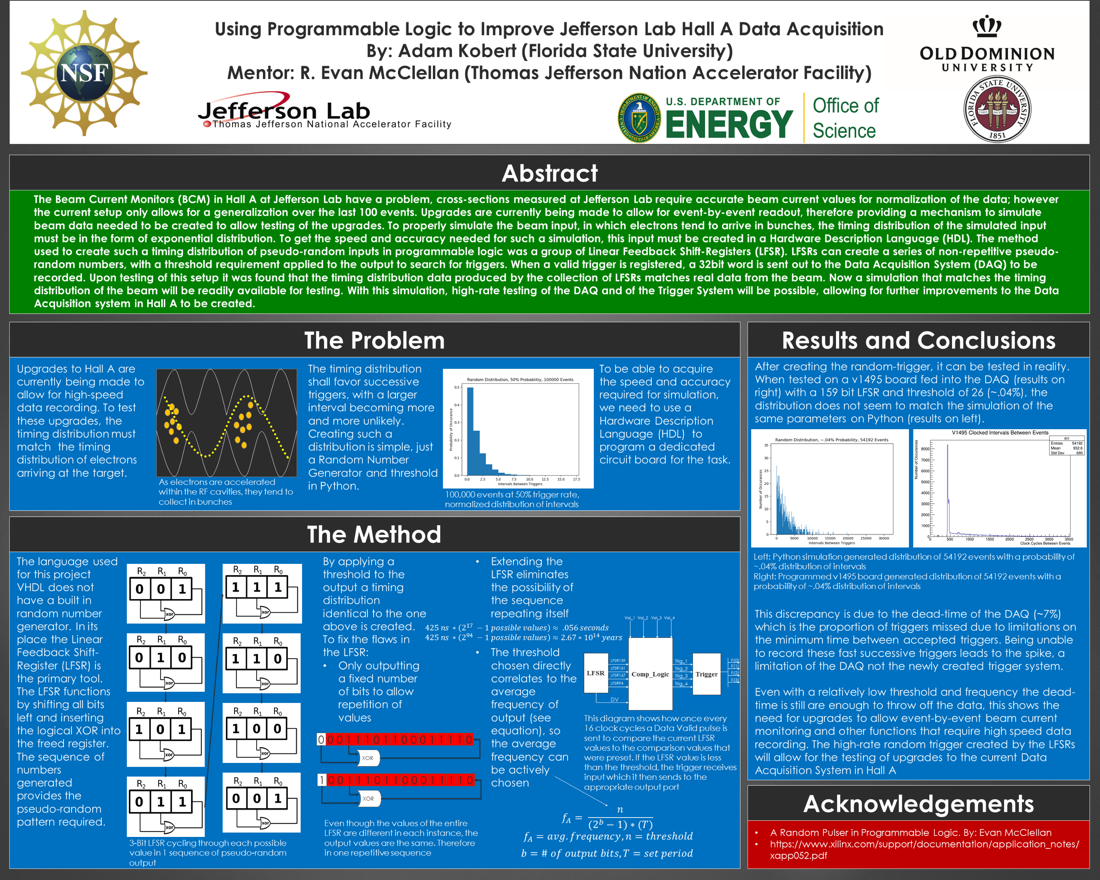Undergraduate Research at Jefferson Lab
Using Programmable Logic to Improve Hall A Data Acquisition
Student: Adam Kobert
School: Florida State University
Mentored By: R. Evan McClellan
The Beam Current Monitors (BCM) in Hall A at Jefferson Lab have a problem, cross-sections measured at Jefferson Lab require accurate beam current values for normalization of the data; however the current setup only allows for a generalization over the last 100 events. In order to allow for upgrades to be made to the system, a method to simulate real data must be created. To accomplish this, the timing distribution of the simulated events must match the real timing of events, an exponential distribution. To be more specific, the time between events must tend to be very small, with fewer events having large timing gaps between them. To get the speed and accuracy needed for such a simulation, this input must be created in a Hardware Description Language (HDL), in which there is no built in method of getting the distribution desired, or any kind of built in random number generator at all. The method used to create such a timing distribution of pseudo-random inputs in programmable logic was a group of Linear Feedback Shift-Registers (LFSR). LFSRs can create a series of non-repetitive pseudo-random numbers, with a threshold requirement applied to the output to generate triggers. When a valid trigger is registered, a 32 bit word is sent out to the Data Acquisition System (DAQ) to be recorded. Upon testing of this setup it was found that the timing distribution data produced by the collection of LFSRs matches real data from the beam. Utilizing a group of LFSR inputs with limiting thresholds, a successful simulation of the input from the beam was created. Now a simulation that matches the timing distribution of the beam will be readily available for testing. With this simulation, high-rate testing of the DAQ and of the Trigger System will be possible, allowing for further improvements to the Data Acquisition system in Hall A.

Citation and linking information
For questions about this page, please contact Education Web Administrator.
